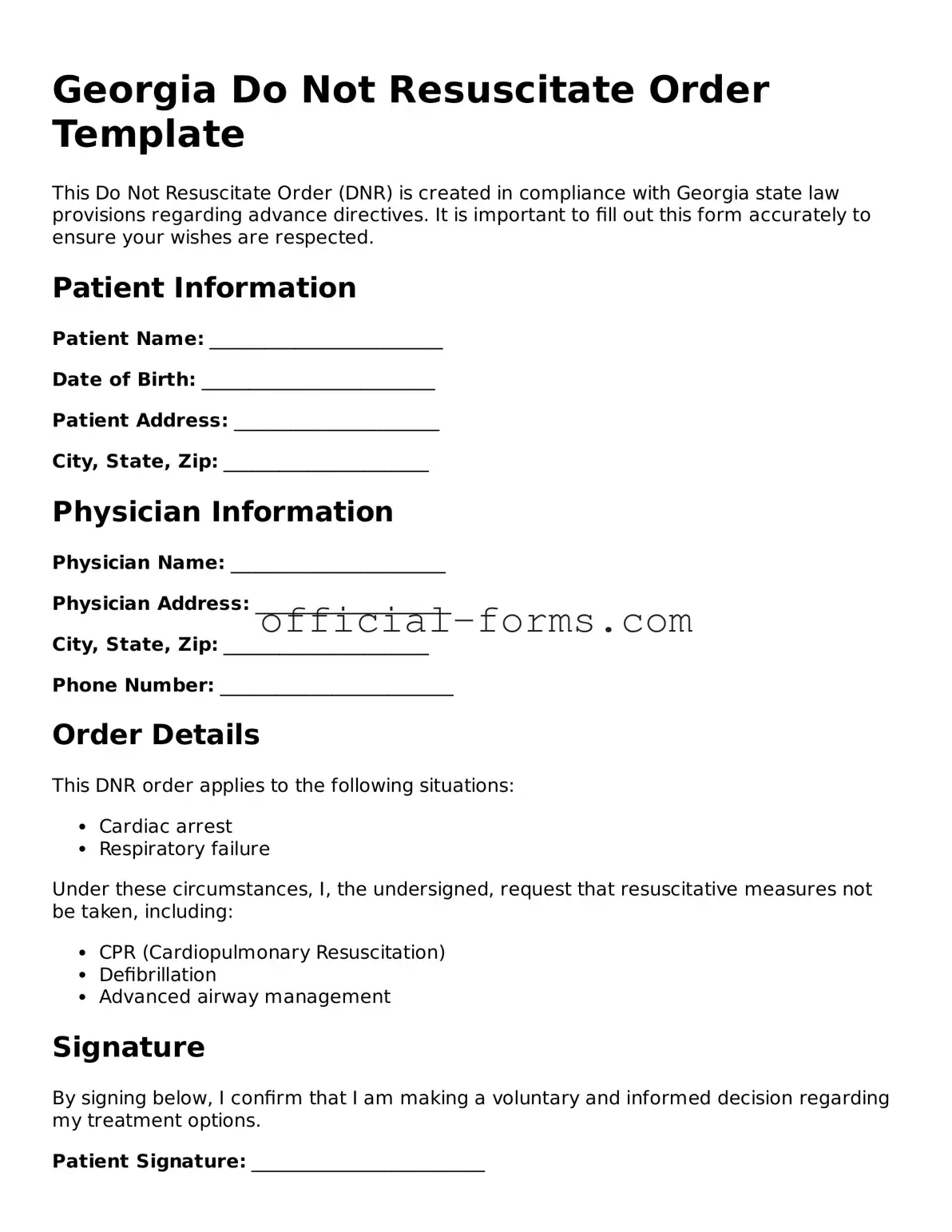Filling out a Do Not Resuscitate (DNR) Order form in Georgia is a significant decision that requires careful consideration. However, many individuals make common mistakes that can lead to confusion or unintended consequences. Understanding these pitfalls can help ensure that your wishes are accurately documented and respected.
One frequent mistake is failing to provide sufficient information about the patient. The DNR form requires the patient's full name, date of birth, and other identifying details. Omitting any of this information can result in the form being deemed invalid. It is crucial to double-check that all personal information is complete and accurate before submitting the form.
Another common error is neglecting to sign the form properly. Both the patient and the physician must sign the DNR Order for it to be legally binding. Some individuals mistakenly believe that only one signature is necessary. Without the appropriate signatures, medical personnel may not recognize the order, potentially leading to unwanted resuscitation efforts.
People often overlook the importance of discussing their wishes with family members and healthcare providers. A DNR Order should not exist in a vacuum. Without clear communication, loved ones may be unaware of the patient's preferences, which can lead to emotional distress during critical moments. Engaging in open conversations can help ensure that everyone is on the same page.
Additionally, individuals sometimes forget to review and update their DNR Orders as circumstances change. Life events such as a new diagnosis or a change in health status may necessitate a revision of the order. Regularly revisiting the DNR form ensures that it reflects the patient’s current wishes and medical condition.
Lastly, misunderstanding the implications of a DNR Order can lead to unintended consequences. Some people mistakenly believe that a DNR means no medical care will be provided at all. In reality, a DNR Order specifically pertains to resuscitation efforts. Patients can still receive other forms of medical treatment, and clarifying this distinction is essential to avoid confusion.
